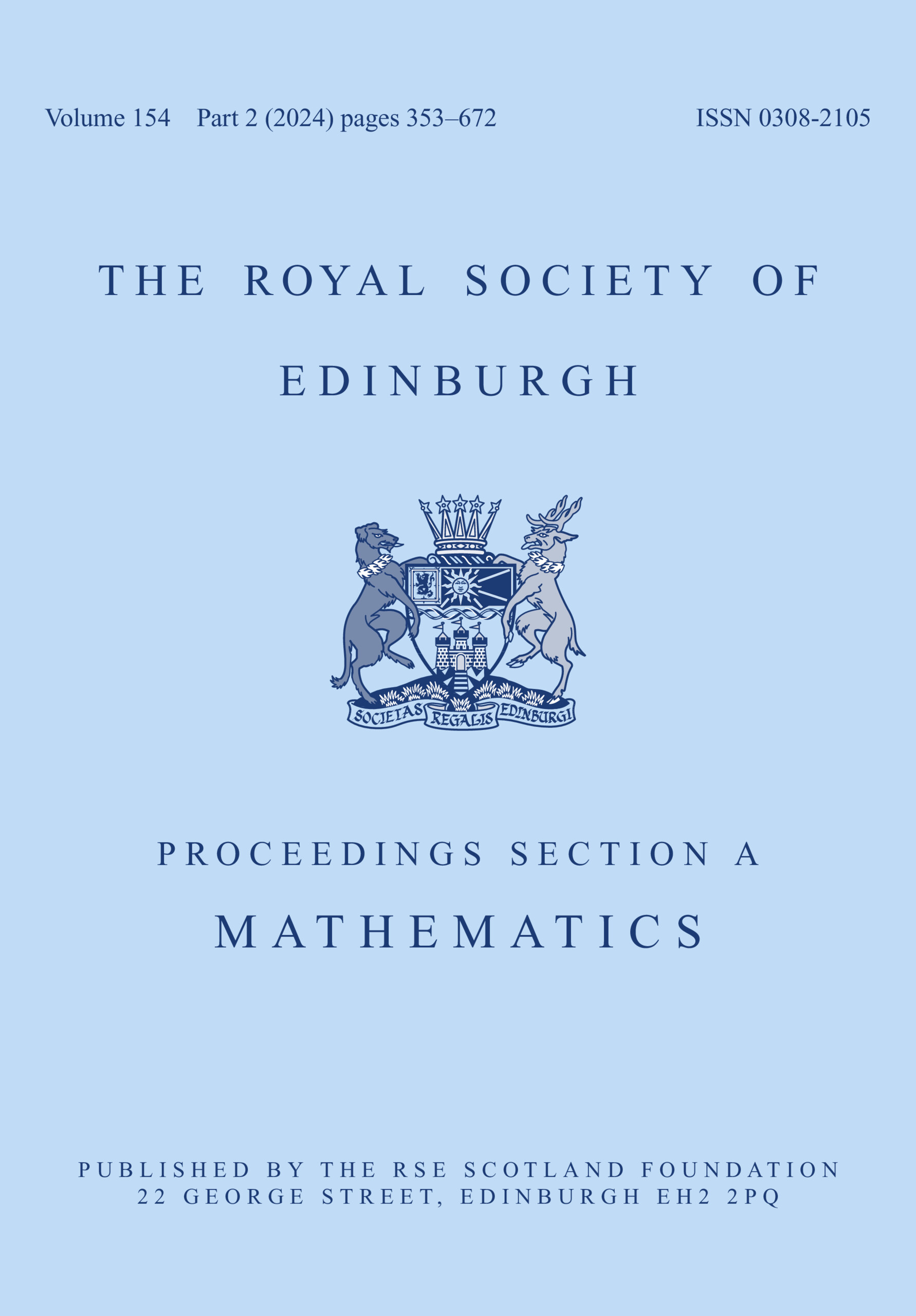Article contents
Singular SPDEs on homogeneous lie groups
Published online by Cambridge University Press: 18 February 2025
Abstract
The aim of this article is to extend the scope of the theory of regularity structures in order to deal with a large class of singular stochastic partial differential equations of the form \begin{equation*}\partial_t u = \mathfrak{L} u+ F(u, \xi),\end{equation*}
\begin{equation*}\partial_t u = \mathfrak{L} u+ F(u, \xi),\end{equation*}
where the differential operator  $\mathfrak{L}$ fails to be elliptic. This is achieved by interpreting the base space
$\mathfrak{L}$ fails to be elliptic. This is achieved by interpreting the base space  $\mathbb{R}^{d}$ as a non-trivial homogeneous Lie group
$\mathbb{R}^{d}$ as a non-trivial homogeneous Lie group  $\mathbb{G}$ such that the differential operator
$\mathbb{G}$ such that the differential operator  $\partial_t -\mathfrak{L}$ becomes a translation invariant hypoelliptic operator on
$\partial_t -\mathfrak{L}$ becomes a translation invariant hypoelliptic operator on  $\mathbb{G}$. Prime examples are the kinetic Fokker-Planck operator
$\mathbb{G}$. Prime examples are the kinetic Fokker-Planck operator  $\partial_t -\Delta_v - v\cdot \nabla_x$ and heat-type operators associated with sub-Laplacians. As an application of the developed framework, we solve a class of parabolic Anderson type equations
$\partial_t -\Delta_v - v\cdot \nabla_x$ and heat-type operators associated with sub-Laplacians. As an application of the developed framework, we solve a class of parabolic Anderson type equations \begin{equation*}\partial_t u = \sum_{i} X^2_i u + u (\xi-c)\end{equation*}
\begin{equation*}\partial_t u = \sum_{i} X^2_i u + u (\xi-c)\end{equation*}
on the compact quotient of an arbitrary Carnot group.
Keywords
MSC classification
Information
- Type
- Research Article
- Information
- Copyright
- © The Author(s), 2025. Published by Cambridge University Press on behalf of The Royal Society of Edinburgh
References
- 1
- Cited by


